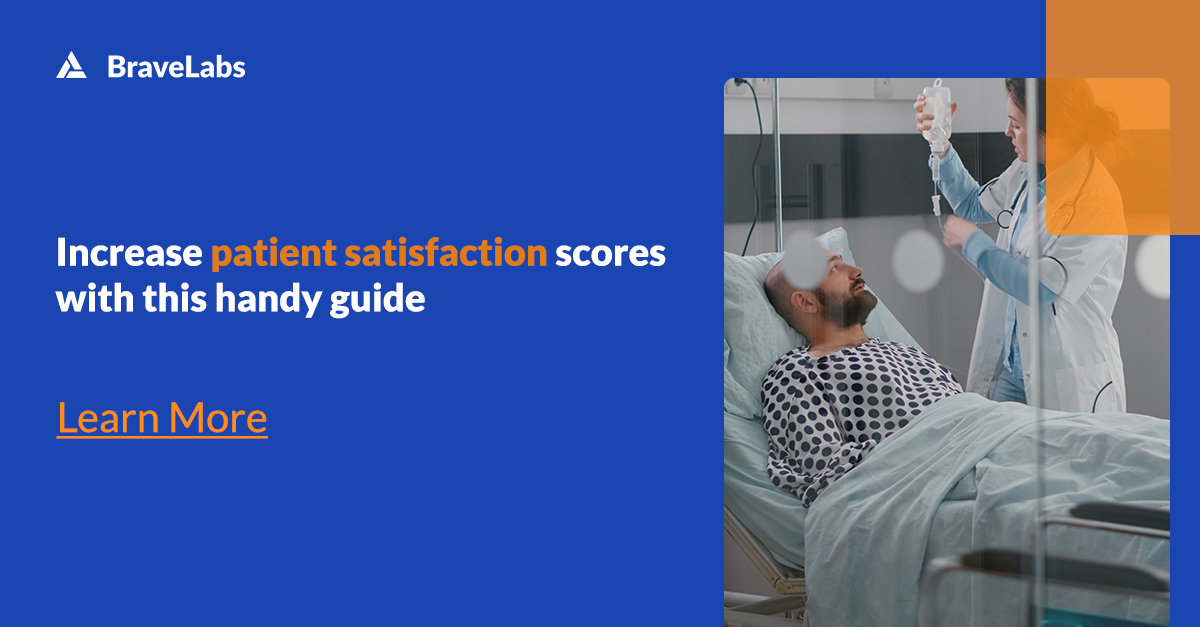Increase patient satisfaction scores with this handy guide
Patient satisfaction is one of the most important metrics for healthcare businesses. But improving patient satisfaction levels is not as quick as many businesses expect it to be.
Introduction
Healthcare organizations are constantly
competing with each other. The healthcare industry may be over a $1 trillion
industry, but that doesn’t stop organizations of all sizes from competing with
each other to acquire and retain patients. As healthcare costs continue to
increase, and the average healthcare spending per adult increases rapidly, the
prize at stake in this competition also keeps rising.
One of the ways that healthcare
organizations can come out over a competitor is through their Hospital Consumer
Assessment of Healthcare Providers and Systems or HCAHPS survey score. The
HCAHPS survey measures levels of patient satisfaction and assigns a score to
each healthcare organization based on the patients’ responses to the survey.
While the HCAHPS survey is not the only one measuring patient satisfaction, it
is the one used by federal and government agencies to also hand
government-subsidized reimbursements.
But what is patient satisfaction in this
context?
Patient
Satisfaction
Patient satisfaction is a metric or a
performance measure or a performance indicator. While it is simply the extent
to which a patient is satisfied with their health care in the extent of an
injury or illness, it is used to assess healthcare organizations.
Patient satisfaction and the methodology
of measuring it has been mostly set in stone in the later 1990s, though the
metrics’ importance has risen in recent years. This is because patient
satisfaction is directly linked to the amount of reimbursement that healthcare
organizations are receiving after the introduction of the Affordable Care Act
and similar legislation and the Hospital Value-Based Purchasing Program.
It is important to state that while
patient experience is what drives patient satisfaction, the two are in fact
different terms. Patient experience describes an individual’s experience during
their healthcare journey and their interactions with the healthcare setting.
The importance of patient experience is that patient experience is what
patients base their satisfaction levels on.
How to
Increase Patient Satisfaction
While many healthcare organizations are
worried about the fact that patient satisfaction metrics reward attractive
healthcare rather than effective healthcare, research into patient satisfaction
scores in the US has revealed that high patient satisfaction levels are often
reported alongside high patient outcomes. This correlation highlights the fact
that healthcare organizations do not need to make a trade-off between effective
and ‘attractive’ healthcare.
Healthcare organizations trying to improve patient satisfaction levels should always keep in mind
that the prime objective should be to make healthcare more patient-centric. By
understanding the patients’ needs and wants, patient satisfaction becomes a
suddenly easy objective to achieve.
Here is BraveLabs’ short guide to
increasing patient satisfaction in healthcare settings.
Improving Communication
Healthcare settings are notorious for their communication gaps between healthcare providers and healthcare receivers. It is not a coincidence that the HCAHPS measures domains like communication with doctors, communication with nurses, and responsiveness of hospital staff in their scoring system.
By improving communication channels
between patients and providers, healthcare organizations are able to reduce one
of the key reasons for discomfort in a patient’s experience. Timely, easy to
understand and comprehensive information given to patients is key. Information
about the patient’s diagnosis, treatment outcomes, expected outcomes, what
procedures are necessary and why, and the expected time are just a few of the
questions that healthcare providers can answer.
Waiting times
Waiting times are always anxiety-inducing
and frustrating, no matter the setting. But in healthcare settings, additional
waiting times can be one of the biggest challenges that healthcare organizations
face when it comes to improving patient satisfaction. But again, clear
communication channels can make this obstacle easier to overcome.
Research has shown that patients don’t
mind long waiting times but only if they have been informed beforehand of the
expected change in waiting time and are generally even more satisfied with
their care.
Doctor-Patient Relationship
As part of the communication channel
improvement, patient satisfaction levels are directly dependent on the quality
of the relationship between a healthcare provider and a patient. Patients with
a healthcare provider who constantly engages with them build trust and loyalty
will have higher satisfaction levels than patients who have a healthcare
provider who does not engage with them or with who they do not have trust in.
Healthy engagement from the side of the
healthcare provider leads to a significant increase in patient experience improvement and thus higher, patient
satisfaction levels.
Conclusion
Customer journey mapping allows
healthcare businesses to understand the increasingly complex ways that today’s
customers communicate with them. By understanding the myriad touchpoints,
healthcare businesses are able to ensure that they fill up the cracks in their
customer journey models and improve their customer experience.
Healthcare businesses today need to
understand that they are not just serving patients but customers instead. With
customer experience being almost as important as the healthcare service being
delivered itself, it is no wonder that healthcare companies that are focusing
on improving customer experiences are coming out on top.
BraveLabs is a medical digital transformation
and marketing company helping healthcare organizations navigate this new
revolution in the healthcare industry. With BraveLabs, healthcare
organizations can integrate customer journey mapping into their business
processes and start improving customer and patient experiences in real-time.
Contact BraveLabs to
understand how CJM can be integrated into your healthcare model.

.jpg)


Comments
Post a Comment